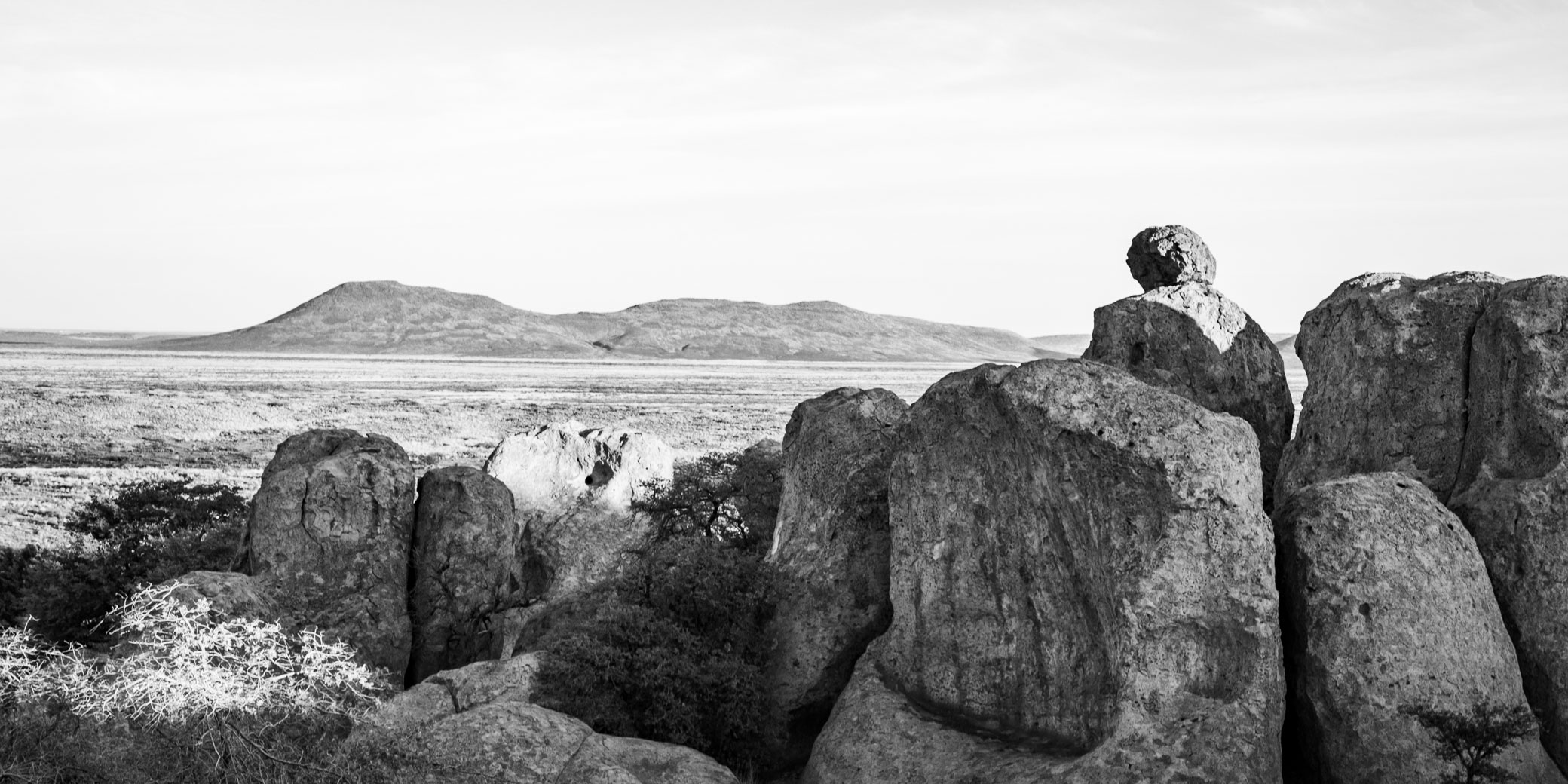City of Rocks State Park, Faywood NM
City of Rocks is an island of rocks within the larger context of the surrounding open country. These amazing rock formations are the remains of solidified and eroded volcanic ash from an eruption 35 million years ago.
Pareidolia (parr-i-DOH-lee-ə), the phenomenom of seeing images of animals and faces in natural and ordinary objects, is such fun! I keep seeing animal and human forms in these rock formations. Do you? See some I've photographed in my Pareidolia Collection. I wonder what indigenous visitors saw.

Rocks {more...}

Rock Wren {more...}

Daybreak {more...}

Great Horned Owl's Nest {more...}
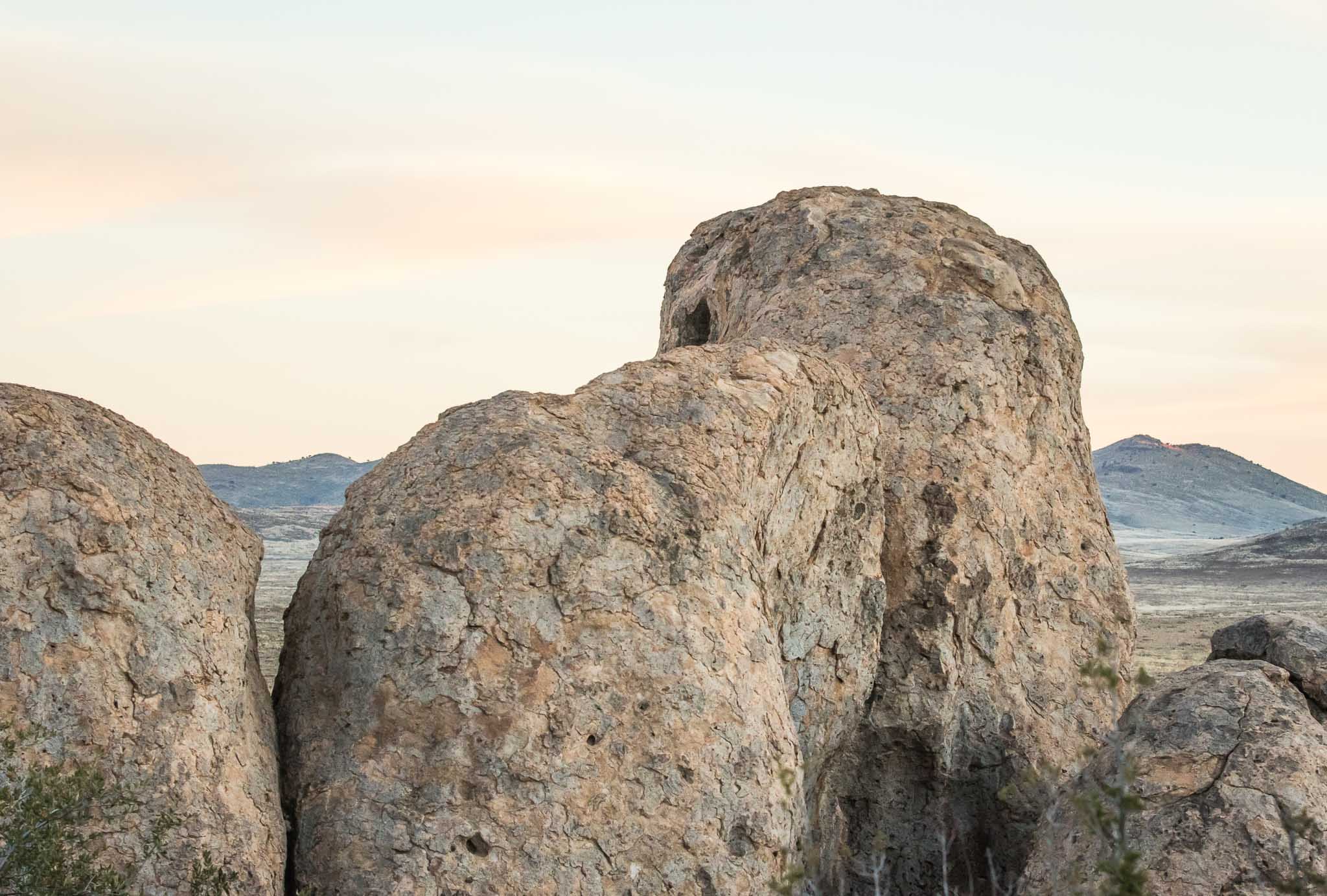
Great Horned Owl's Nest {more...}
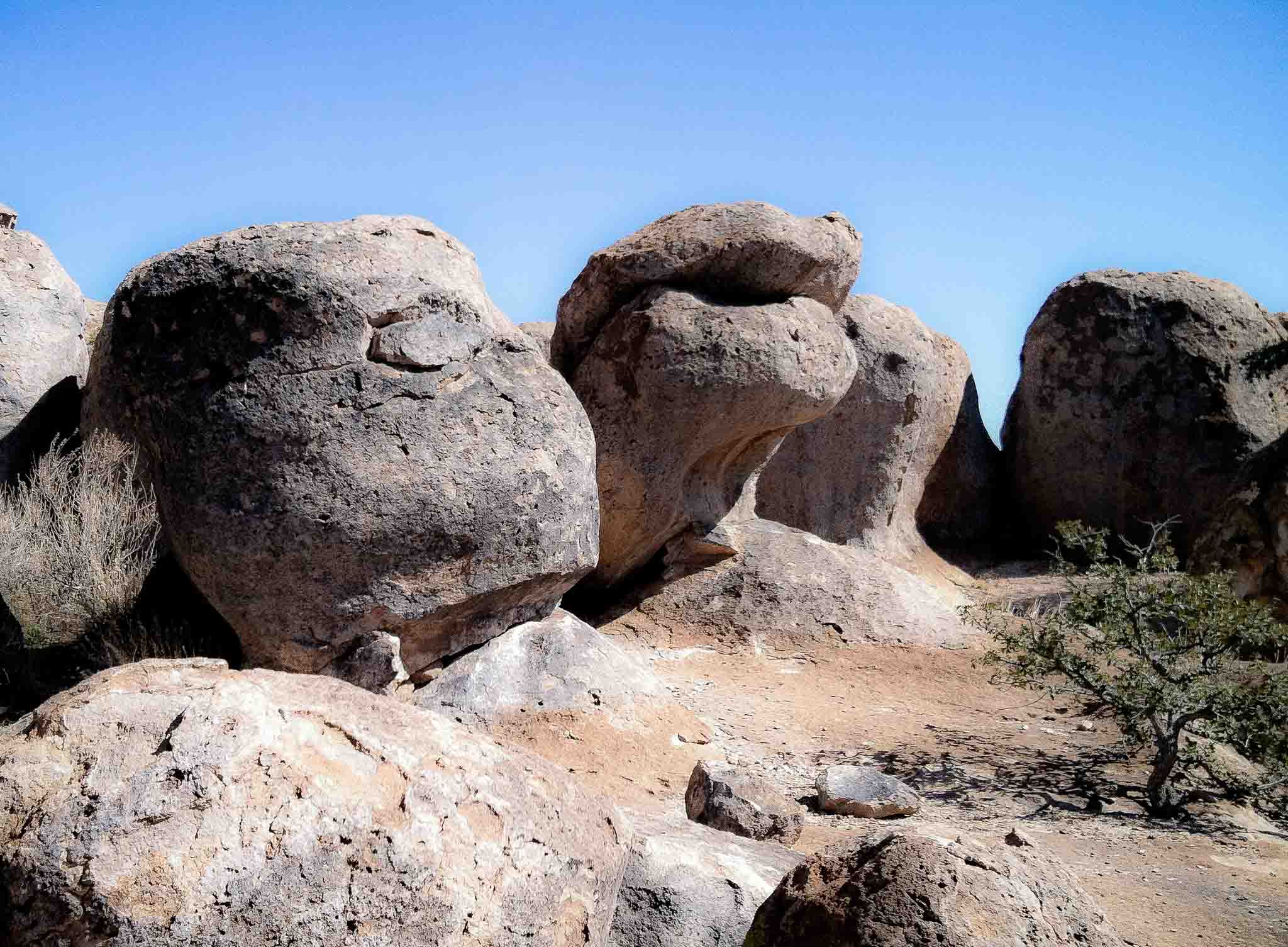
Spectator Sports {more...}
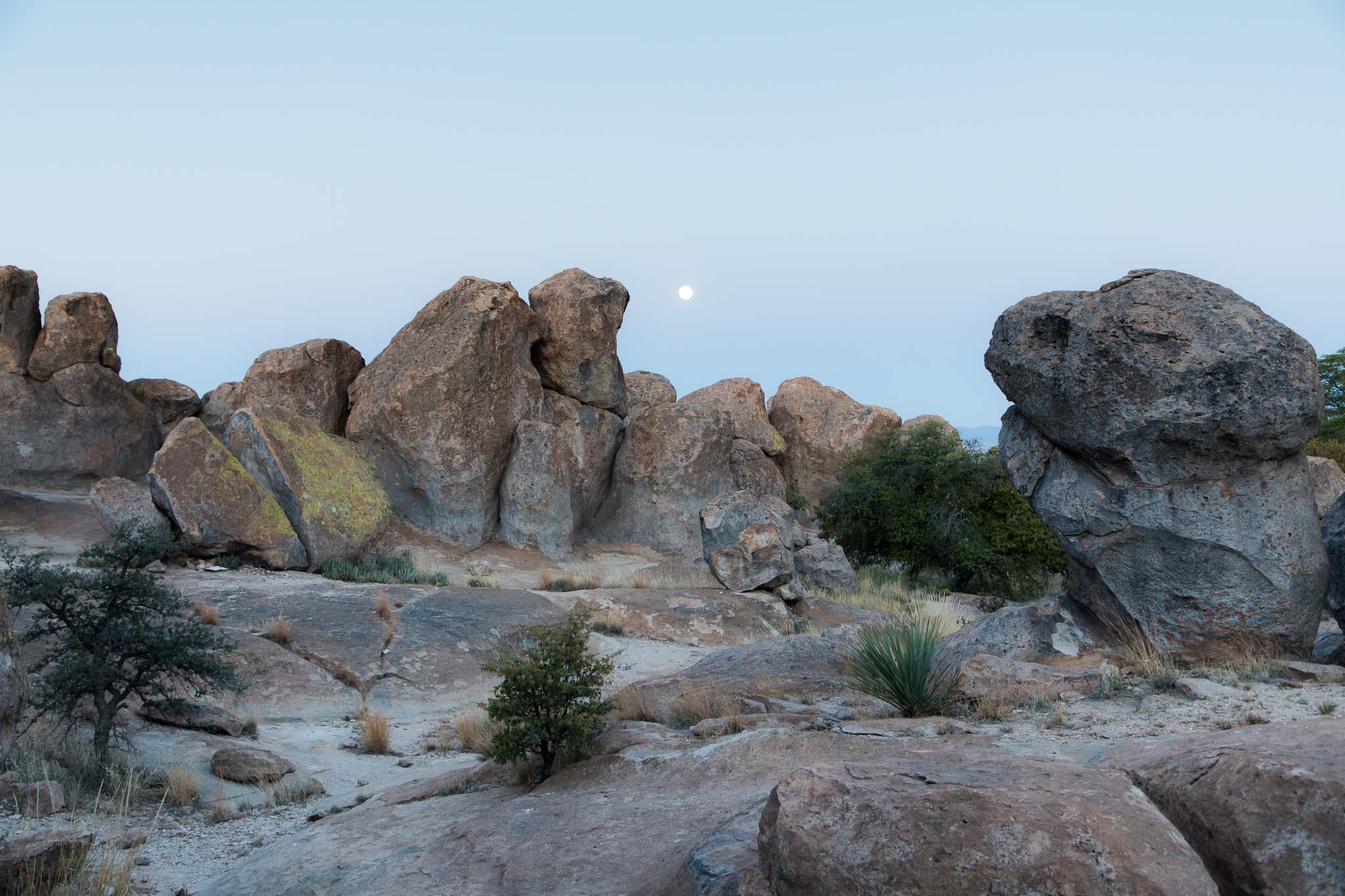
Goodnight Moon {more...}
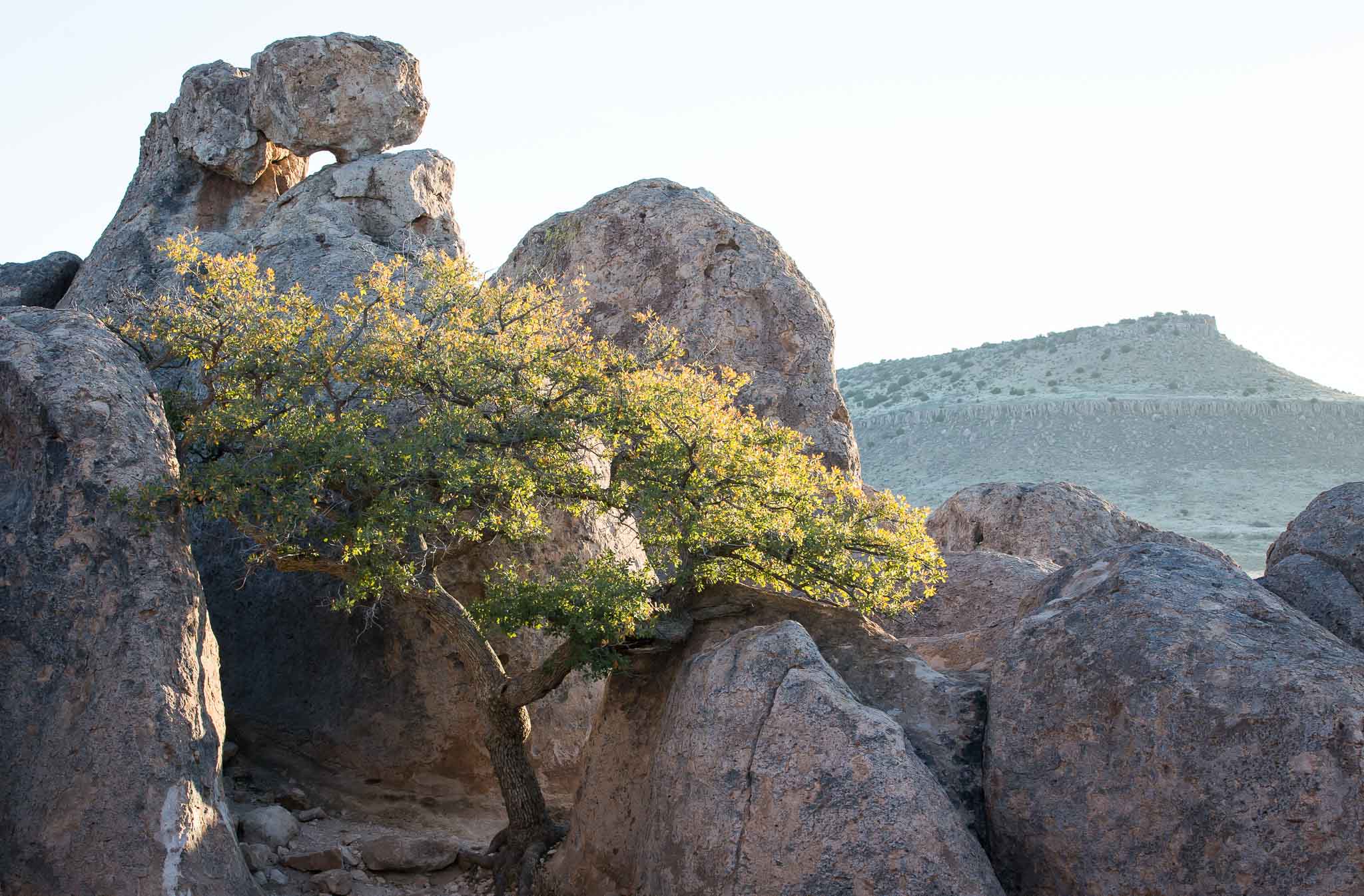
Sun Kissed {more...}

Abstract Magenta {more...}
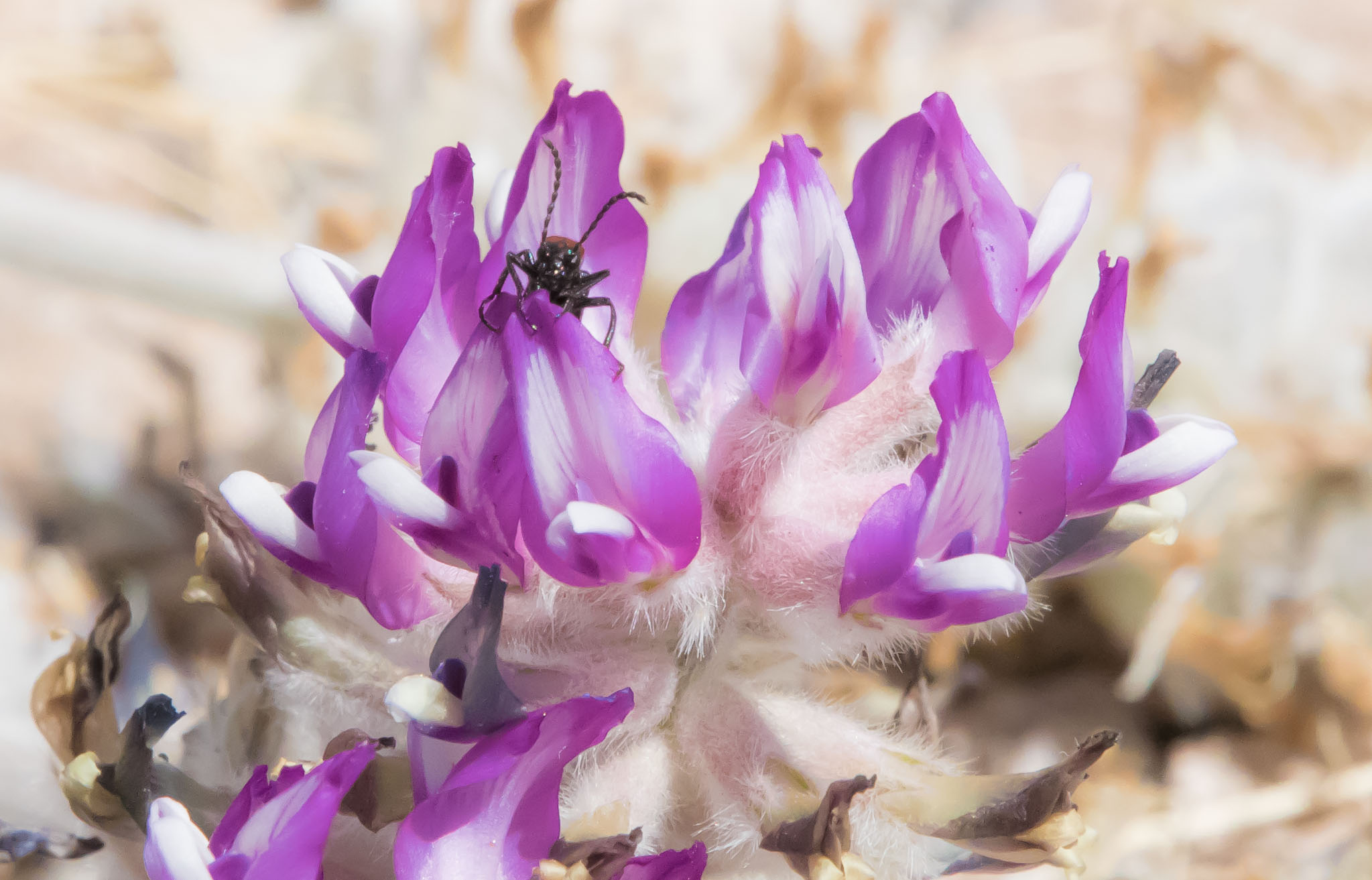
Crescent Milkvetch with Bug {more...}
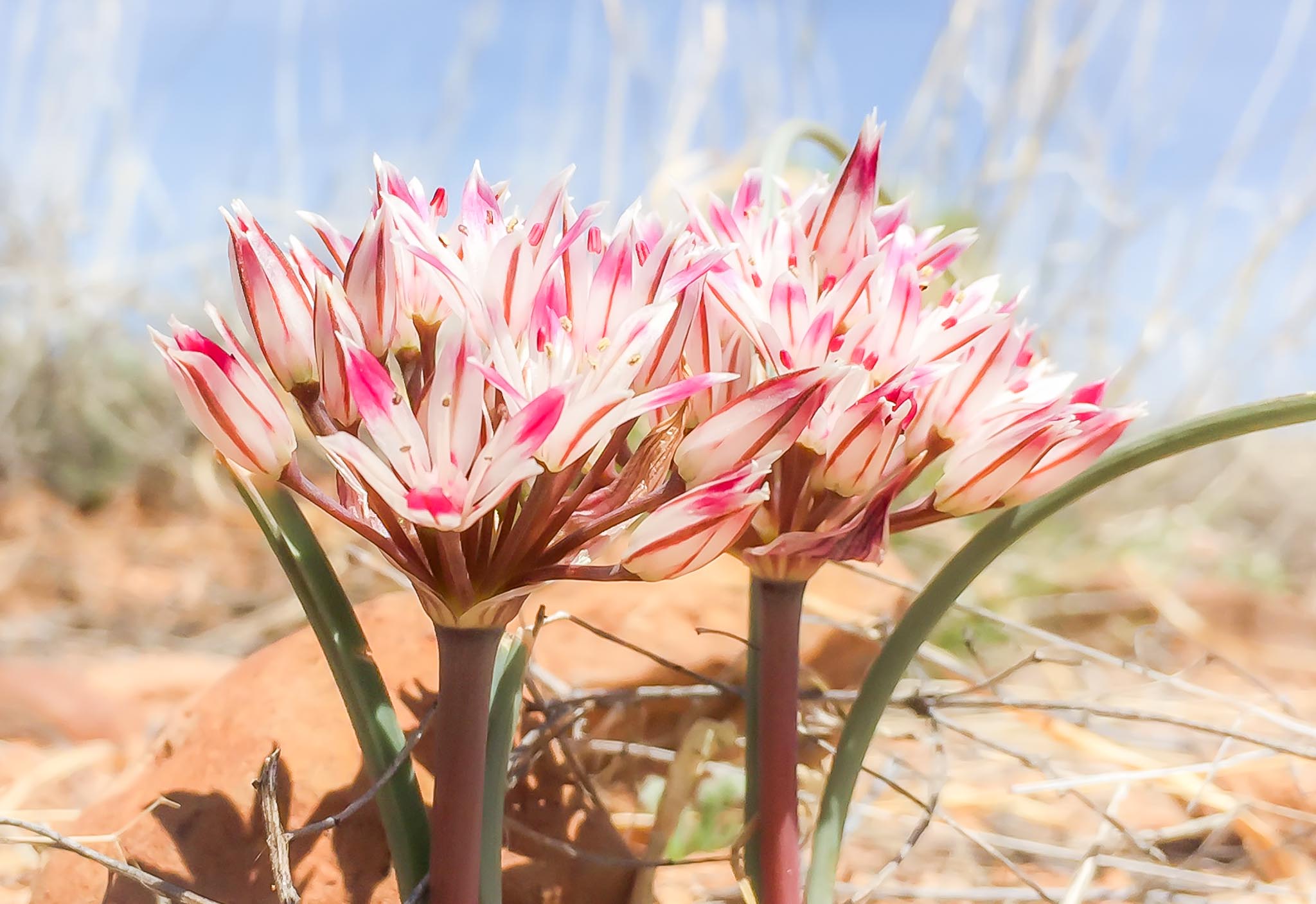
Desert Onion {more...}
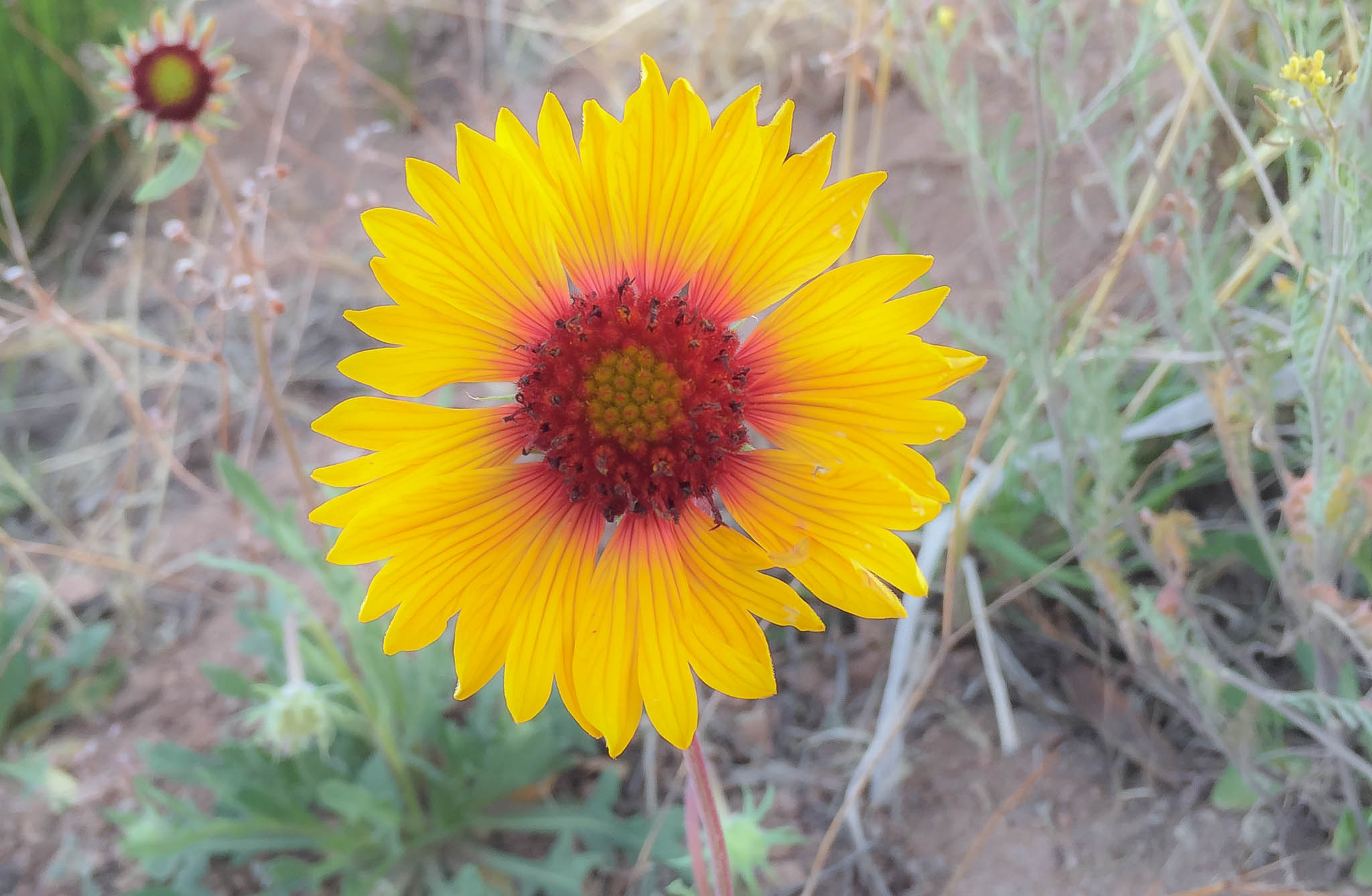
Indian Blanket {more...}
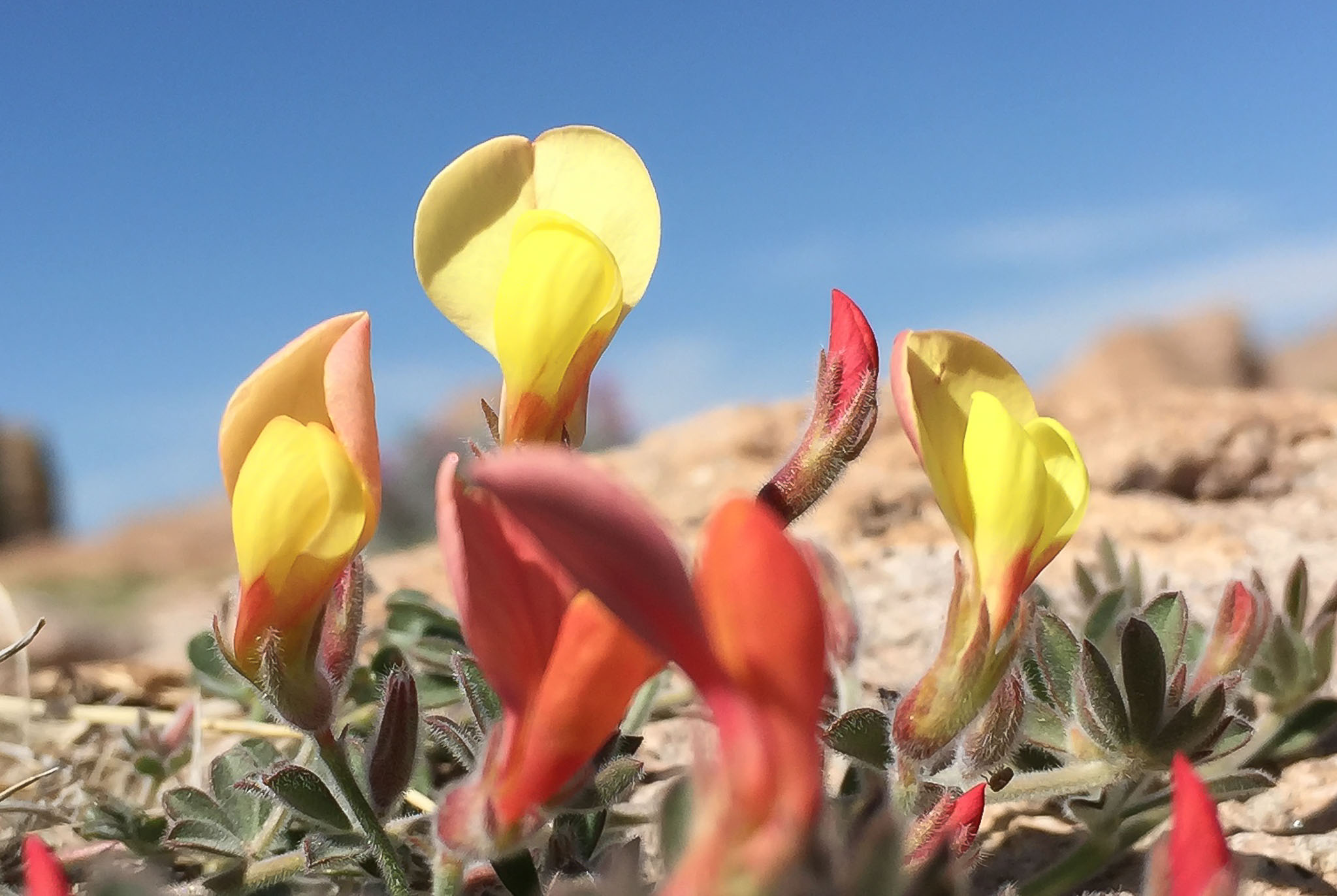
New Mexico Bird's-Foot Trefoil {more...}
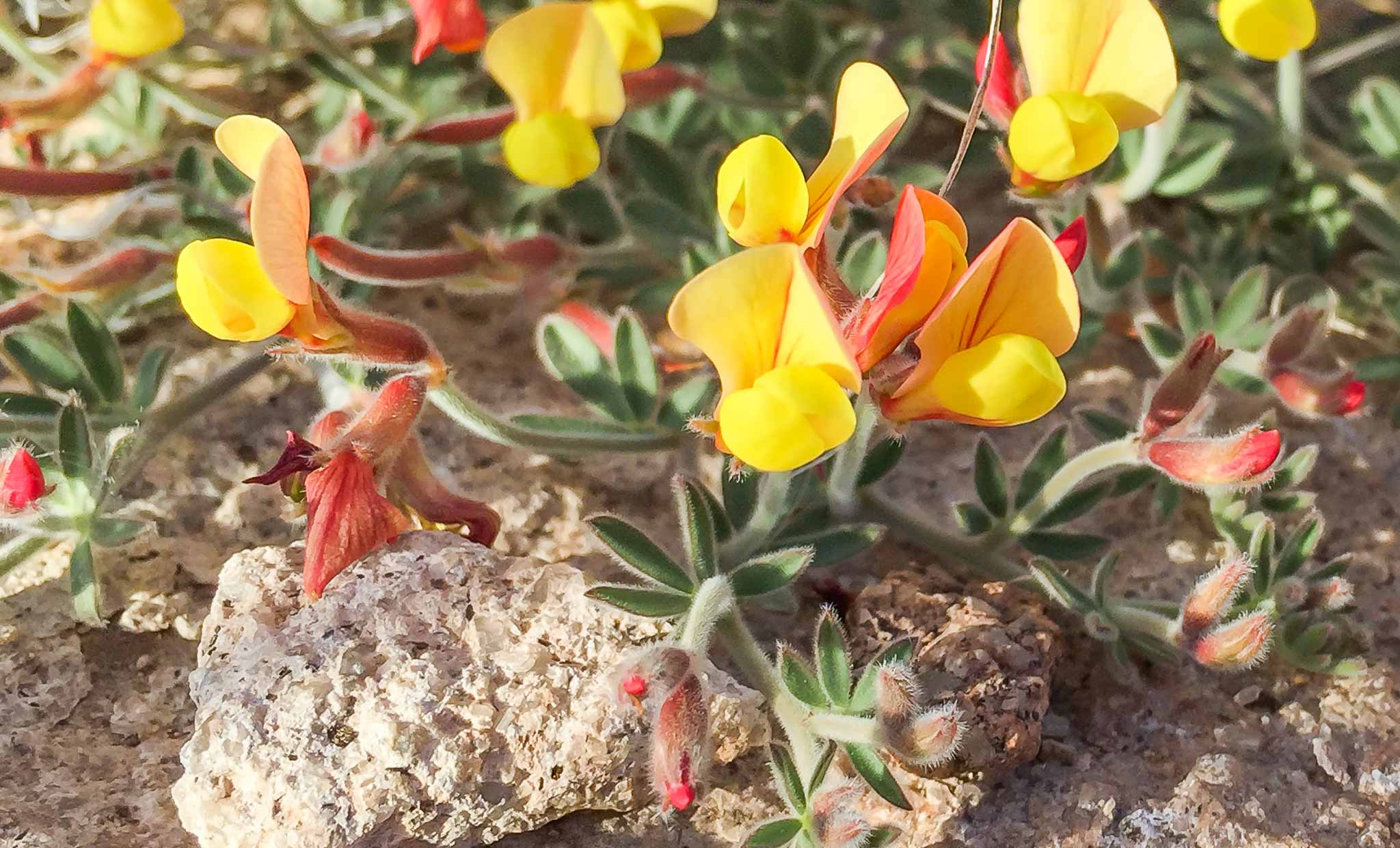
New Mexico Bird's-Foot Trefoil {more...}
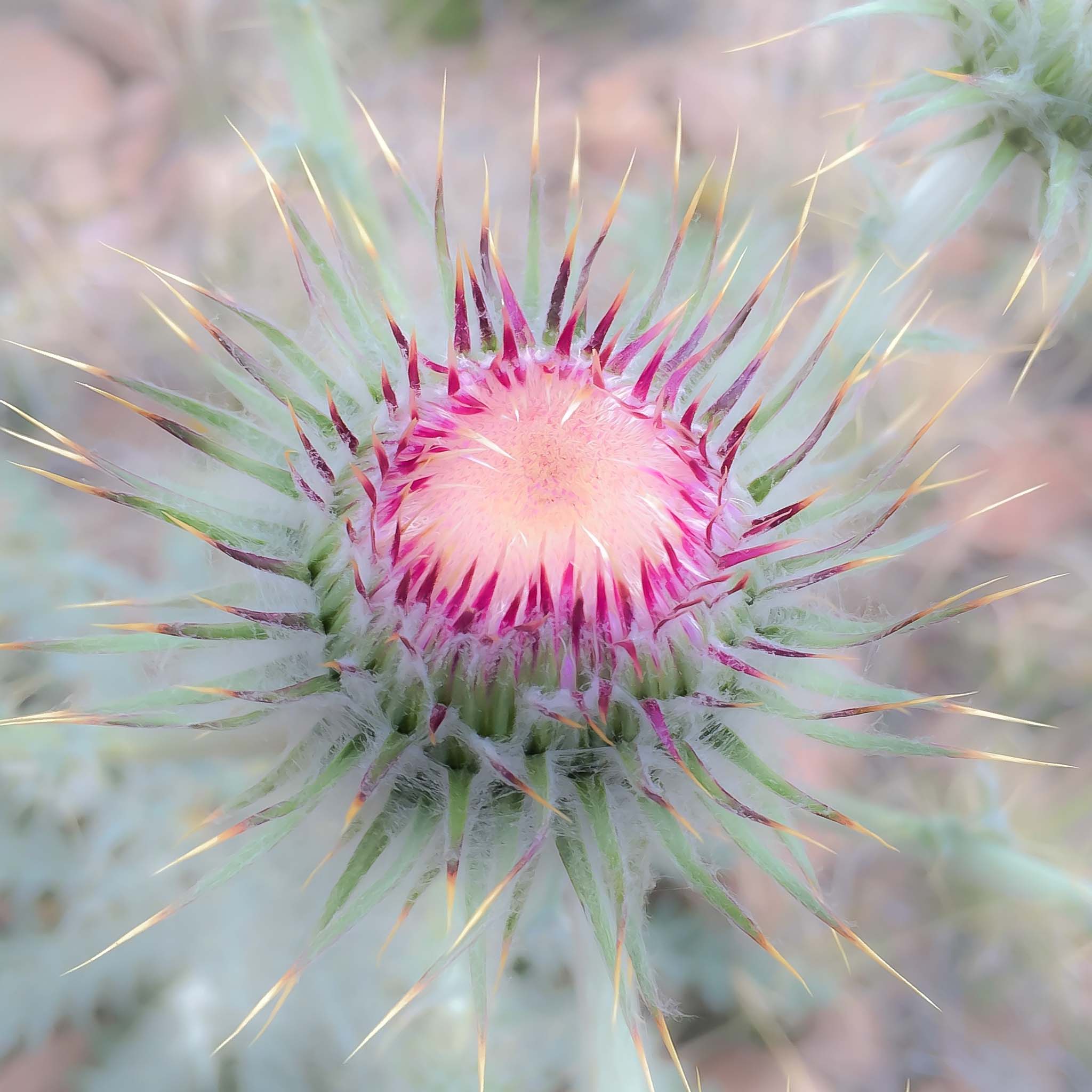
Radiance, a Thistle Bud {more...}
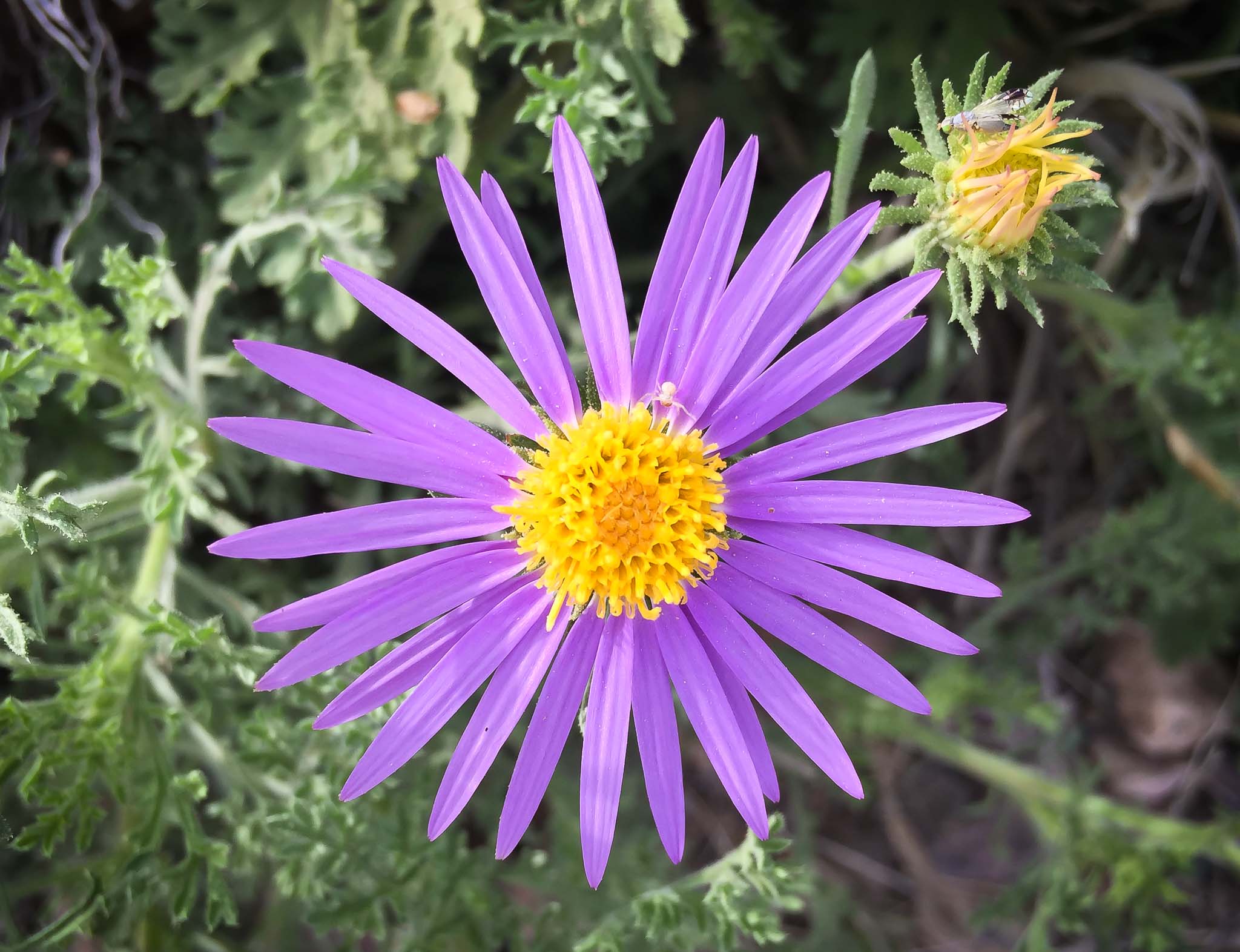
Tahoka Daisy with Bugs {more...}
Addenda to Photos
Rocks
City of Rocks State Park, Faywood NM
March 4, 2015
It's early March and one wouldn't normally expect to see green leaves on the trees. It turns out most of them are Emory Oaks, small oak trees native to this area that retain their leaves through the winter until new leaves are produced in the spring.
Rock Wren
City of Rocks State Park, Faywood NM
March 28, 2018
Cute little guy. Perched on a rock, awaiting its turn to drop down to the puddle under the hydrant for a drink.
Rock Wren
The rock wren (Salpinctes obsoletus) is a small songbird of the wren family native to South America and western North America. It is the only species in the genus Salpinctes. Adults are about 12 cm long. They have grey-brown upperparts with small black and white spots and pale grey underparts with a light brown rump. Additional distinctive features include a light grey line over the eye, a long slightly decurved thin bill, a long barred tail and dark legs. They actively hunt on the ground, around and under objects, probing with their bill as their extraction tool. They mainly eat insects and spiders. Its song is a trill that becomes more varied during the nesting season. These birds are permanent residents in the south of their range, but northern populations migrate to warmer areas from the central United States and southwest Canada southwards. They are occasional vagrants in the eastern United States. During the breeding season, they move to dry, rocky locations, including canyons, from southwestern Canada south to Costa Rica to build cup nests in a crevice or cavity, usually among rocks.
Wikipedia
Daybreak
Eurasian Collared Doves, Aermotor Windmill, City of Rocks State Park, Faywood NM
February 12, 2016
A pair of Eurasian Collared Doves have chosen this perch to catch the first rays of sunlight to break over the rocks.
Aermotor Windmill Company
La Verne Noyes, founder of Aermotor Windmill Company, had hired engineer Thomas O. Perry for a different job but saw the potential of the all-metal windpump developed by Perry after extensive experiments. The first Aermotor was sold in 1888, with 24 windmills in total being sold in the first year. Aermotor soon became a strong competitor among its contemporaries selling over 20,000 of its windmills by 1892. Over the next 30 years Aermotor grew and expanded, introducing accessories and variants on "the mathematical windmill."
La Verne Noyes died in 1919. He left the Aermotor Company to a tax paying trust, with 48 colleges and universities as beneficiaries.
Aermotor continued to innovate and manufacture windmills throughout World War II and helped to produce the top secret Norden bombsight.
During the latter part of the century ownership of the Aermotor Company changed hands and had its operation moved and expanded to new venues, including the country of Argentina; Broken Arrow, Oklahoma; Brentwood, Missouri; and Conway, Arkansas. By 1981, 80% of all windmills manufactured in The United States had their genesis in Conway. In 1998 Aermotor was purchased by Kees Verheul, as owner and president. It now operates from a 40,000-square-foot (3,700 m2) facility in San Angelo, Texas. In 2006, the company was purchased by a group of West Texas ranchers, and the name restored to its original from 1888..."The Aermotor Company".
Wikipedia
Great Horned Owl's Nest
Great Horned Owl, City of Rocks State Park, Faywood NM
April 11, 2016
I took this picture a couple of years ago. The owl’s are nesting here again this year but so far I’ve had no luck getting an interesting picture.
Great Horned Owl's Nest
City of Rocks State Park, Faywood NM
March 1, 2016
A pair of Great Horned Owls have set up housekeeping in this hole in a rock formation here at City of Rocks State Park.
Spectator Sports
Pareidolia, City of Rocks State Park, Faywood NM
March 2, 2012
In the fascinating rock formations at City of Rocks State Park I see animal and human forms everywhere I look. Go see my Pareidolia Collection to see images of some of them.
Goodnight Moon
Dawn, City of Rocks State Park, Faywood NM
April 11, 2017
G’day sun.Sun Kissed
City of Rocks State Park, Faywood NM
March 17, 2016
Pareidolia
It's called pareidolia, a psychological phenomenon wherein the mind perceives a familiar pattern of something where none actually exists.
What do you see?
Emory Oak
Emory Oak, Quercus emoryi is an evergreen tree in the red oak group, retaining its leaves through the winter until the new leaves are produced in spring, and is a large shrub or small tree from 5–17 meters (17-57 feet) tall. The leaves are 3–6 cm (1.2-2.4 inches) long, entire or wavy-toothed, leathery, dark green above, paler below. The acorns are 1.5–2 cm (0.6-0.8 inch) long, blackish-brown, and mature in 6–8 months from pollination; the kernel is sweet, and is an important food for many mammals and birds.
Wikipedia
Abstract Magenta
Fendler's Hedgehog Cactus, City of Rocks State Park, Faywood NM
April 29, 2016
This little Fendler's Hedgehog Cactus with it's showy outsized magenta blossom caught my eye today and I just couldn't resist messing with it a bit in Lightroom.
Fendler's Hedgehog Cactus
Echinocereus fendleri is a species of cactus known by the common names pinkflower hedgehog cactus and Fendler's hedgehog cactus. It grows in deserts and woodlands in the Southwestern United States and Northeastern Mexico and is most common in New Mexico.
Echinocereus fendleri has an erect oval or cylindrical stem, sometimes forming a clump of several spreading stem branches. The stem may reach 7.5 to 30 centimeters in maximum height. There are up to 16 spines per areole, generally in shades of brown and white, or white with a brown stripe.
The showy flower is most any shade of pink, from nearly white to deep maroon. It can be 11 centimeters long and wide, each tepal measuring up to 7 centimeters long. The fruit is red and a few centimeters long.
The flesh of the plant is edible, and Native American groups consumed the stems and fruits.
One variety of this species, Echinocereus fendleri var. kuenzleri, Kuenzler's hedgehog cactus, is rare and federally listed as an endangered species of the United States. When it was listed in 1979, there were only 200 known individuals of this variety remaining, all in the Sacramento Mountains of New Mexico. It was threatened with extinction by poachers, who removed many plants from the wild.
Wikipedia
Crescent Milkvetch with Bug
City of Rocks State Park, Faywood NM
March 31, 2015
Bugs and bees are fond of these flowers. Anyone know what the bug is?
Crescent Milkvetch - Astragalus Amphioxys
The pinnately compound leaves provide one means of distinguishing astragalus amphioxys from the many other similar species in this genus; they are small, grey-green, covered in short silky hairs that lie flat against the surface, and grow in opposite, upwards-angled pairs along an arching stalk. Another identifying feature is the seed pod, which is (usually) arched to form a semi-circle and has its lower seam at the base of a groove rather than a protruding ridge. Pods have a mottled appearance; patches of red on a greenish-yellow background. Flowers are about an inch in length, open towards the end, tubular lower down, with the outsides also noticeably hairy. The upper banner petal is curved backwards, but not as strongly as for some other species.
See: The American Southwest
Desert Onion
City of Rocks State Park, Faywood NM
April 5, 2015
What a beautiful little wildflower. To give a sense of scale this one stands about 4 inches high.
Largeflower Onion, Desert Onion - Allium Macropetalum
Allium macropetalum produces typically small but attractive bell-shaped flowers, mostly light pink but with a distinct, dark pink or purple vertical stripe along the middle. Each flower has 6 petals, and they occur in clusters (umbels) of between 10 and 20 heads. This onion can form extensive colonies, sprouting from a spreading root system. Like most allium species, the plant produces edible bulbs, raw or cooked. Favored habitats tend to be drier and less wooded than for many other species, and the plant is found across a wide area, in grassy or rocky environments.
AmericanSouthwest.netAllium macropetalum, the desert onion, is a plant species native to the southwestern United States. It is known from desert plains and hills in Arizona, Utah, Colorado, New Mexico, and Texas, at elevations up to 2500 m.
Allium macropetalum forms egg-shaped bulbs up to 2.5 cm long. Flowers are bell-shaped, pink to purple, up to 12 mm across, with yellow or purple anthers.
Wikipedia / Allium Macropetalum
Indian Blanket
City of Rocks State Park, Faywood NM
April 7, 2015
These colorful Indian Blanket wildflowers are quite common here at City of Rocks State Park.
Indian Blanket, Firewheel, Blanket Flower (Gaillardia pulchella)
The branching stem of this plant is hairy and upright, growing to 60 cm (2 ft) tall. The leaves are alternate, mostly basal, 4–8 cm long, with edges smooth to coarsely toothed or lobed. The pinwheel, daisy-like inflorescences are 4–6 cm in diameter, vividly colored with red, orange and yellow. The central disc florets of the flower head tend to be more red-violet, with the outer ray florets being yellow. In one variety, almost the entire flower is red, with only the barest tips of the pedals touched with yellow. It blooms practically year-round in some areas, but more typically in summer to early fall. The seed is an achene.
It is a hardy plant, not picky about soil, though sandy and well-drained are best. It has a high drought tolerance and does best with a dry, hot climate in full sun. Its vibrantly colored flowers can be seen carpeting fields and the sides of highways for miles in the summer to late fall. Favored by honeybees, it produces a dark reddish amber buttery tasting honey. In the garden, the flowers can be removed/deadheaded to promote further blooming. It self-seeds freely.
This flower thrives in much of central United States, from northern Mexico to southern Canada. It is the state wildflower of Oklahoma.
Wikipedia / Gaillardia Pulchella
New Mexico Bird's-Foot Trefoil
City of Rocks State Park, Faywood NM
April 1, 2015
I was complaining below about the trefoil being past its prime and the weather being too windy to shoot flowers. The wind calmed a bit and I found some fresher patches of trefoil to shoot. All is well.
The camera in my new Apple iPhone 6 Plus continues to impress me. It is much improved over the camera in my old iPhone 5 and is a great companion to my Canon DSLRs. It's small size lets me get a picture like this that I couldn't have gotten with a DSLR. In this shot the camera lens is less than an inch from the ground and a DSLR is just too big to get that close to the ground.
I use a telephoto zoom lens on my DSLR most of the time for birds and such and find it too long for some landscape shots I want to grab. I'm hoping this iPhone is will be easy way to have a wider lens available for those shots without having to change lenses in the field.
New Mexico Bird's-Foot Trefoil - Lotus Plebeius
The bright yellow flowers of lotus plebeius turn orange then red as they mature, in common with many other members of this genus. They grow in small numbers towards the top of the slightly short-hairy stems, which tend to be angled sideways, forming tangled clumps, together with the densely-growing compound leaves. Flowers have the familiar pea-shape, formed of five petals; the largest (the banner) is curved strongly backwards, and has a lengthwise groove down the center. The slender involucre terminates in five narrow sepals, ending in a curved point. Leaves also have a sparse hair covering, and slightly pointed tips.
American Southwest
New Mexico Bird's-Foot Trefoil
City of Rocks State Park, Faywood NM
March 30, 2015
By all reports the wildflowers here in southern New Mexico are especially beautiful this spring and I'm certainly enjoying them. You'll find some pictures of the local scene on DesertUSA's 2015 Wildflower Report page.
My timing in arriving here to find these little flowers at their peak was a stroke of luck. By the next day many were past their prime and not worth a picture. I was a little disappointed. This image doesn't really grab me and I wanted to try for a better one. Today I found some fresher flowers but alas didn't get any better images. Spring is windy here and today is a particularly windy day. Maybe tomorrow...
Every piece of clutter or undone organization is a warning: that you may be unable to follow through on a future thing you want to do.
Daniel Jalkut @danielpunkass 2015-04-01
New Mexico Bird's-Foot Trefoil - Lotus Plebeius
The bright yellow flowers of lotus plebeius turn orange then red as they mature, in common with many other members of this genus. They grow in small numbers towards the top of the slightly short-hairy stems, which tend to be angled sideways, forming tangled clumps, together with the densely-growing compound leaves. Flowers have the familiar pea-shape, formed of five petals; the largest (the banner) is curved strongly backwards, and has a lengthwise groove down the center. The slender involucre terminates in five narrow sepals, ending in a curved point. Leaves also have a sparse hair covering, and slightly pointed tips.
American Southwest
Radiance, a Thistle Bud
City of Rocks State Park, Faywood NM
April 12, 2015
This morning I took a walk up the trail toward the top of Table Mountain, the mesa overlooking City of Rocks State Park from the northeast. This huge, five foot tall thistle is growing right beside the trail.
I can't believe I haven't walked up there before. Until this spring I didn't realize the trail was even there and open to the public. The trail goes all the way to the top of the mesa and this morning I stumbled on the trailhead and took this hike on a whim. I wasn't prepared to go all the way to the top and didn't. I think it's about 2 miles to the top. Maybe I'll do it tomorrow. There are many more wildflowers along the trail I'd like to photograph. Plus it would be great to get to the top.
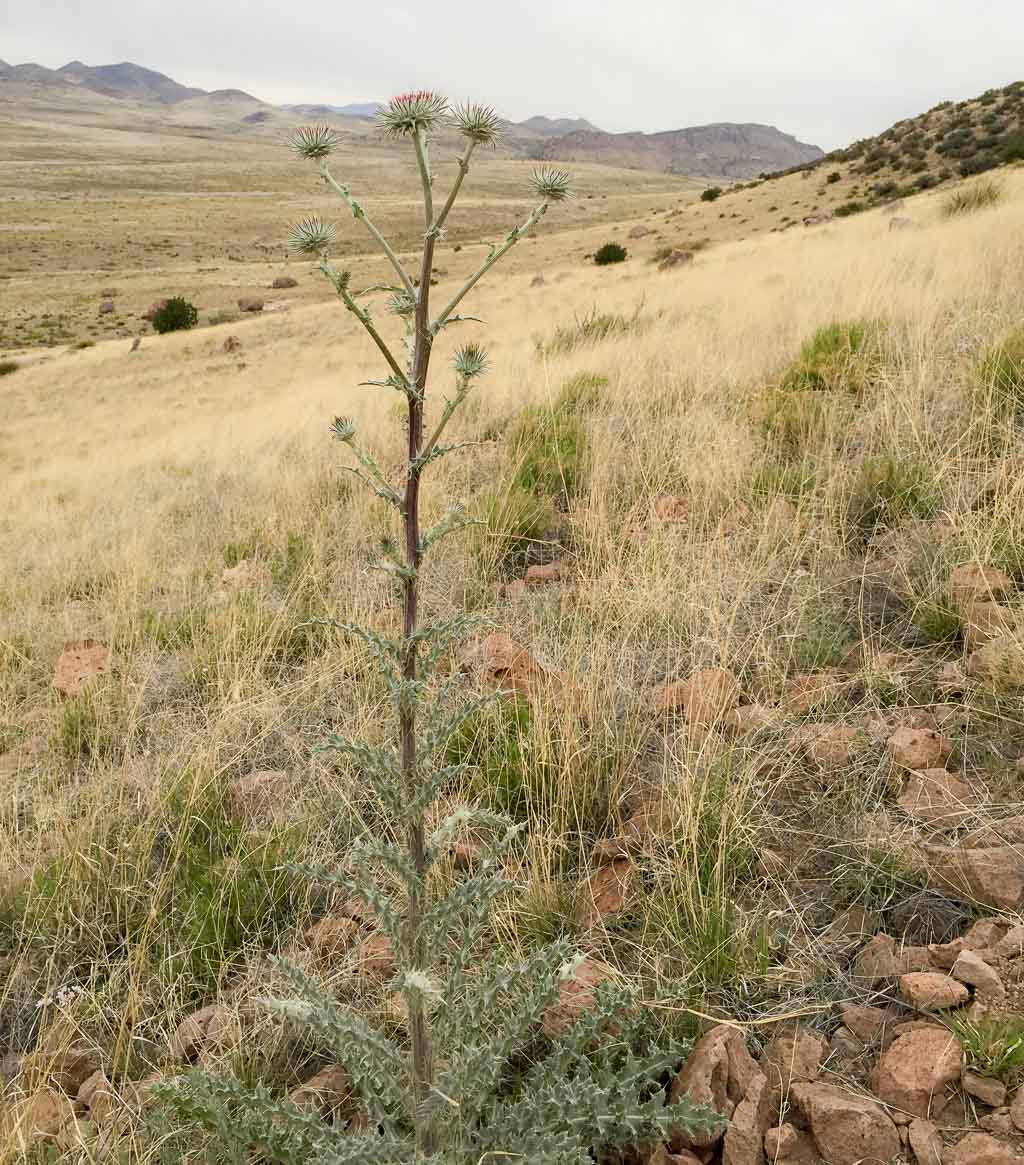
New Mexico Thistle, Cirsium Neomexicanum
Cirsium neomexicanum is a species of thistle known by the common names New Mexico thistle, powderpuff thistle, lavender thistle, foss thistle and desert thistle.
This plant is native to the southwestern United States, particularly the Mojave Desert.
Cirsium neomexicanum is a tall plant, routinely exceeding 2 metres (6.6 ft) in height. It erects a stem which may have webby fibers and long, stiff spines. The sparse leaves are greenish-gray, hairy, and very spiny.
Atop the mainly naked stems are inflorescences of one or more large flower heads with rounded bases and phyllaries covered in long, curving spines. The largest heads may be up to 5 centimeters in diameter. They are packed with white or lavender disc florets.
The fruit is a flat brown achene with a long pappus which may reach 2 centimeters long. Unlike many other thistles, this species tends not to be a troublesome noxious weed.
Wikipedia / Cirsium Neomexicanum
Tahoka Daisy with Bugs
City of Rocks State Park, Faywood NM
April 3, 2015
Bugs are fond of these flowers and so am I. The False Tahoka Daisy described below is fairly common here too. I'll see if I can get a picture for comparison but I'm not sure I can get one worth posting. The False Tahoka Daisies are not very photogenic. Anyone know. what the bugs are?
Tahoka Daisy, Tansy Aster - Machaeranthera tanacetifolia
Branched stems with fern-like leaves ending in flower heads with many bright purple, very narrow rays surrounding a yellow central disk. Tahoka-daisy is a low, spreading, 6-12 in. annual with delicate but showy, aster-like flowers. Numerous lavender rays surround a yellow center. The stems are densely covered with sharp-pointed, deeply cut leaves which appear fern-like. Plants often form clumps or mounds.
The fern-like leaves of this beautiful species make it one of the easiest to identify in a complex group. False Tahoka Daisy (M. parviflora) is similar but has smaller flower heads, each with a central disk only 1/4-1/2 (6-13 mm) wide, and less elaborately divided leaves; it occurs from Utah south to Arizona, New Mexico, Texas, and Mexico.
Wildflower.org
